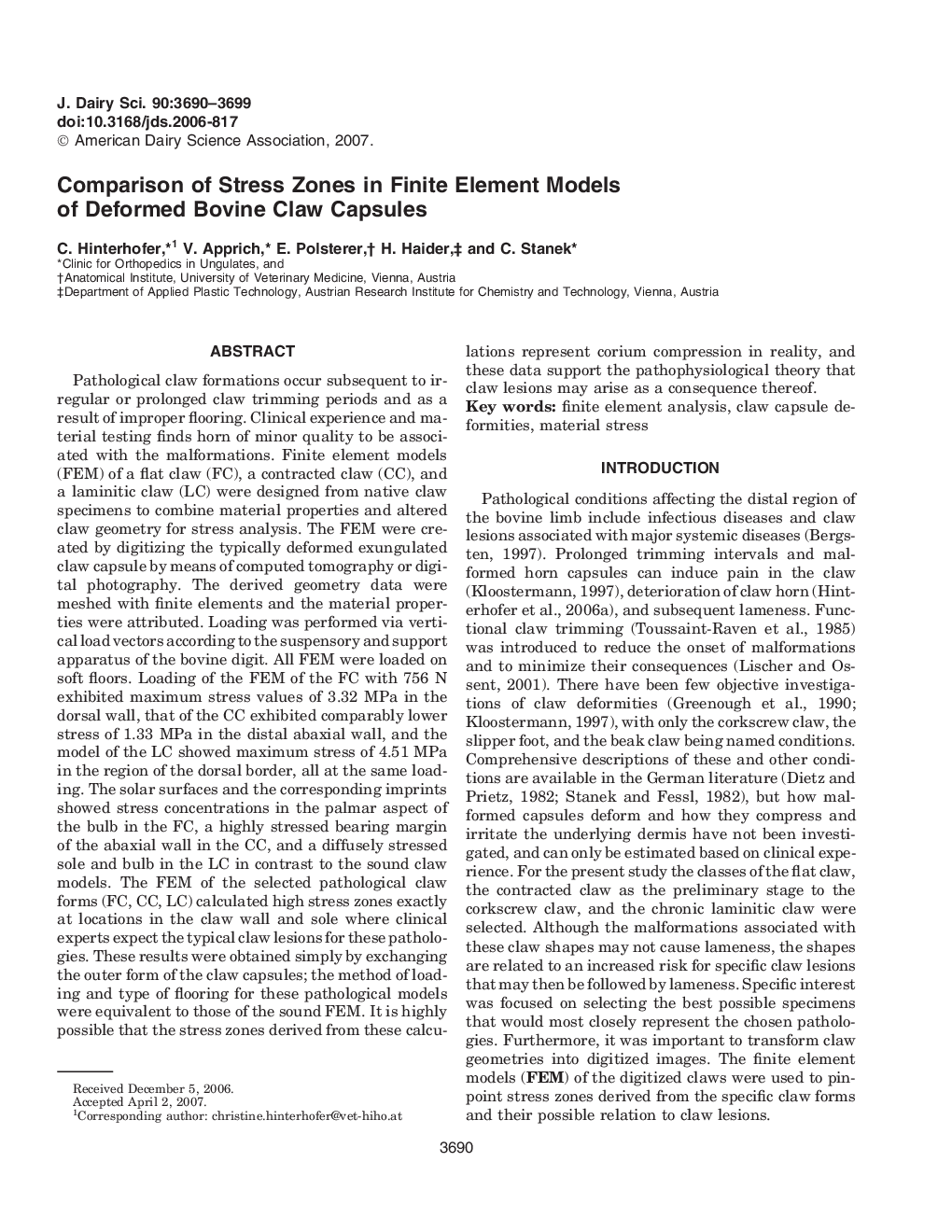| Article ID | Journal | Published Year | Pages | File Type |
|---|---|---|---|---|
| 2440449 | Journal of Dairy Science | 2007 | 10 Pages |
Abstract
Pathological claw formations occur subsequent to irregular or prolonged claw trimming periods and as a result of improper flooring. Clinical experience and material testing finds horn of minor quality to be associated with the malformations. Finite element models (FEM) of a flat claw (FC), a contracted claw (CC), and a laminitic claw (LC) were designed from native claw specimens to combine material properties and altered claw geometry for stress analysis. The FEM were created by digitizing the typically deformed exungulated claw capsule by means of computed tomography or digital photography. The derived geometry data were meshed with finite elements and the material properties were attributed. Loading was performed via vertical load vectors according to the suspensory and support apparatus of the bovine digit. All FEM were loaded on soft floors. Loading of the FEM of the FC with 756 N exhibited maximum stress values of 3.32 MPa in the dorsal wall, that of the CC exhibited comparably lower stress of 1.33 MPa in the distal abaxial wall, and the model of the LC showed maximum stress of 4.51 MPa in the region of the dorsal border, all at the same loading. The solar surfaces and the corresponding imprints showed stress concentrations in the palmar aspect of the bulb in the FC, a highly stressed bearing margin of the abaxial wall in the CC, and a diffusely stressed sole and bulb in the LC in contrast to the sound claw models. The FEM of the selected pathological claw forms (FC, CC, LC) calculated high stress zones exactly at locations in the claw wall and sole where clinical experts expect the typical claw lesions for these pathologies. These results were obtained simply by exchanging the outer form of the claw capsules; the method of loading and type of flooring for these pathological models were equivalent to those of the sound FEM. It is highly possible that the stress zones derived from these calculations represent corium compression in reality, and these data support the pathophysiological theory that claw lesions may arise as a consequence thereof.
Keywords
Related Topics
Life Sciences
Agricultural and Biological Sciences
Animal Science and Zoology
Authors
C. Hinterhofer, V. Apprich, E. Polsterer, H. Haider, C. Stanek,
